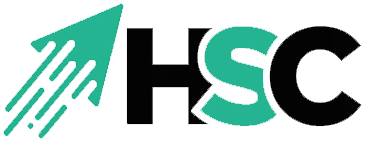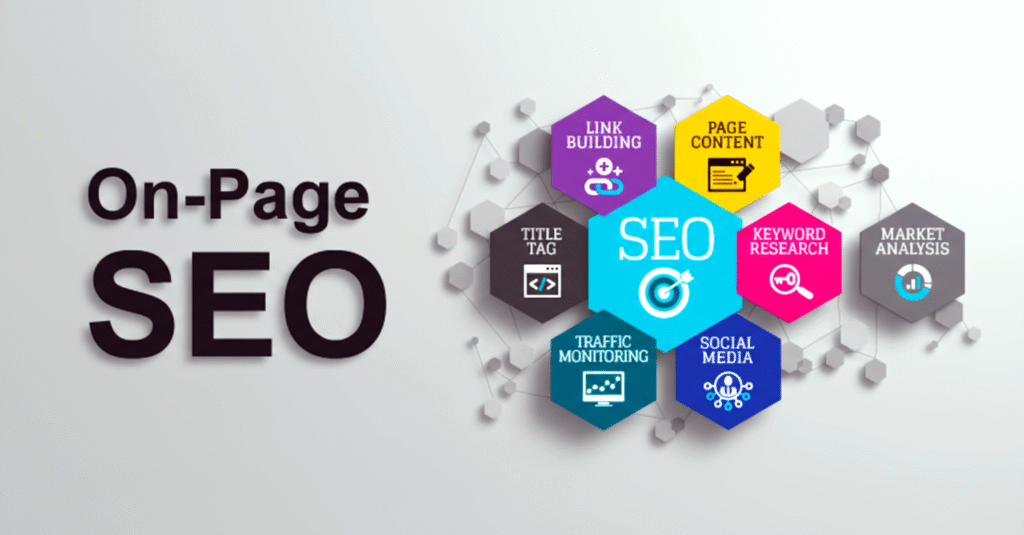Why On-Page SEO Is the Unsung Hero of Rankings
If SEO were a Broadway show, backlinks might hog the spotlight like the dramatic lead actor. But without strong on-page SEO—the script, set design, staging, lighting, and audience experience—the performance would flop.
And these days, data backs up its starring role:
- 53%+ of all web traffic still comes from organic search (DemandSage, 2024).
- The first Google result secures ~27–30% of clicks, while results on page two earn less than 1% (SoCal News Group, 2024).
- SurferSEO’s 2025 study found that top-ranking pages cover ~74% of relevant subtopics, while weaker ones barely cover 50%.
Translation? You can earn backlinks until your laptop weeps, but if your onsite content and technical foundation aren’t solid, they won’t deliver their potential. On-page SEO is the base camp for every climb up Mount Rankings.
What Is On-Page SEO and Why Is It Critical?
On-page SEO is the discipline of optimizing an individual webpage so it ranks higher, earns more qualified traffic, and pleases both human readers and search engines. If off-page SEO is networking at the big party, on-page SEO is making sure your home is sparkling clean when the company (Google) drops by.
Why it’s non-negotiable in 2025:
- Google’s AI-driven algorithms rely on page-level signals to evaluate relevance.
- User experience (UX) and accessibility are baked into ranking factors.
- Answer engines, snippets, and Google’s AI overviews increasingly rely on structured, clear, authoritative on-page content.
Think of on-page SEO as the concrete foundation under your digital house. Without it? The walls wobble.
Title Tags: Your First Ranking Signal
Title tags are your webpage’s “first impression”—like the title of a book in Google’s library.
Best Practices (2025):
- Keep titles between 50–65 characters for desktop + mobile friendliness.
- Front-load primary keywords while making the text natural.
- Balance clarity with curiosity. You’re writing for humans who need reasons to click.
- Match search intent—informational, commercial, or navigational.
✅ Example: On-Page SEO Best Practices for Higher Google Rankings in 2025
❌ Example: SEO Blog – Home
Meta Descriptions: The Click-Through Booster
Meta descriptions don’t directly affect PageRank, but they absolutely nudge users to click—and click-through signals matter.
Optimization Guidelines:
- Length: 150–160 characters.
- Action verbs: Discover, Learn, Master, Unlock.
- Keyword placement: Naturally include the main phrase (Google bolds keyword matches).
- Value-driven: Show users what they’ll gain, not what you want.
Example: Discover the best on-page SEO practices for 2025. Step-by-step tips to optimize content, boost rankings, and drive organic traffic.
Headings: Your SEO Roadmap
Headings aren’t just big bold words—they’re content architecture. Clear heading structure helps both humans and Google identify what matters.
Best Practices:
- One H1 per page. The H1 declares the main focus, including keyword.
- Hierarchy matters: H2s for big sections, H3–H4s for subsections.
- Question-based headings align with “People also ask” and voice search queries.
Comparison Table: Good vs. Bad Heading Execution
| Bad Example | Better Example | Why It Wins |
|---|---|---|
| H1: SEO Tips | H1: On-Page SEO Best Practices in 2025 | Specific + keyword-rich |
| H2: Stuff | H2: How Do Title Tags Impact SEO? | Mirrors search intent |
| Random bold text | H3: What Is Schema Markup and Why Use It? | Structured + scannable |
Content Optimization: Beyond Keyword Stuffing
Google has matured far beyond the awkward era of keyword stuffing. In 2025, context, topical depth, and authority trump repetition.
Best Practices for Content in 2025:
- Place the primary keyword in the first 100–150 words.
- Expand coverage with semantic keywords and subtopics (e.g., “on-page factors,” “Google ranking signals,” “Core Web Vitals,” etc.).
- Support claims with data, stats, and expert insights.
- Write with short paragraphs, bullets, examples for readability.
- Focus on depth. SurferSEO found that covering 20% more subtopics led to sizeable ranking lifts within 8 weeks.
Pro tip: If your article reads like something a friend could explain over coffee, it’s human-friendly. If it reads like a spammy dictionary… well, back to the editing board.
Internal Links: Building Content Bridges
Think of internal links as connective tissue across your site. They help users discover related content and help Google understand your structure.
How to Get Them Right:
- Anchor text: Descriptive, keyword-rich (e.g., learn more about technical SEO).
- Destination: Prioritize cornerstone content and money-making pages.
- Balance: Roughly 3–5 smart internal links per 1,000 words is a healthy ratio.
Image SEO: Small Tweaks, Big Impact
Images are essential for UX, but also prime opportunities for SEO wins.
Steps for Image Optimization:
- Descriptive filenames (on-page-seo-title-tag.png).
- Alt text that’s natural + keyword-integrated (SEO title tag example with truncation fix).
- Use WebP or optimized PNG/JPEG for faster loading.
- Incorporate original illustrations/graphics. Google values uniqueness here.
Stat: 97% of top-ranking pages include at least one image (DemandSage, 2024). That’s not coincidence.
Page Speed & Core Web Vitals: The Silent Ranking Factor
Slow sites kill SEO faster than a captcha you can’t solve—run your site through Google’s PageSpeed Insights tool to uncover performance issues instantly.
Core Fixes You Can Apply Today:
- Minify bulky CSS, JS, and HTML.
- Use a CDN to deliver assets faster.
- Compress + lazy-load images.
- Invest in reliable, fast hosting.
Data point: Pages taking longer than 3 seconds lose nearly 40% of visitors (DemandSage, 2024).
Schema Markup: Your Shortcut to Rich Results
Schema is like SEO’s label-maker—helping Google understand exactly what’s on your page. In 2025, schema diversity is growing fast.
Schemas Worth Adding:
- FAQ Schema (blogs + guides).
- Product Schema (e-commerce).
- Review Schema (stars build credibility).
- Article / Organization Schema (publishers + brands).
BrightEdge (2024) study: High-ranking pages increasingly implement multiple schema types, not just one.
New Trends in On-Page SEO for 2025
The fundamentals remain rock-solid, but a few new frontiers are shaping the field:
- AI Search & Overviews: Google’s AI-driven SERPs pull conversational, structured answers directly into summaries. Your content must be written in Q&A and topical clusters to qualify.
- Generative Engine Optimization (GEO): A new discipline focused on optimizing so AI assistants recommend your content. Clear, structured answers are key.
- Topical Authority, Not Just Keywords: Cover broader subtopics deeply. Pages with stronger semantic coverage routinely outrank keyword-stuffed competitors.
FAQs: Quick Answers to the Big Questions
1. Is on-page SEO more important than off-page SEO?
Not “more,” but foundational. Backlinks matter far less if on-page basics are weak.
2. How often should I update my on-page SEO?
Audit every 3–6 months, and after every major Google algorithm update.
3. How many keywords should I target per page?
1 primary keyword, 3–5 secondary terms (semantic or related).
4. Can on-page SEO alone get me to page one?
For long-tail or low/medium competition terms—yes. For competitive head terms, strong off-page SEO will be necessary.
5. Biggest mistake to avoid in 2025?
Keyword stuffing and UX neglect. Google increasingly punishes low-quality “helpful content” duplicates.
Key Takeaways: On-Page SEO in 2025 and Beyond
On-page SEO has grown up. It’s no longer about sneaky hacks or keyword repetition—it’s about delivering value, depth, clarity, and exceptional user experience. Title tags, schema, Core Web Vitals, internal links, and image optimization aren’t just boxes to tick. They’re compounding advantages.
Here’s your action plan:
- Pick one high-value page on your site.
- Apply at least 3–5 optimizations from this guide.
- Measure changes in CTR, bounce rate, and rankings over 8–12 weeks.
SEO is a marathon. In 2025, the winners aren’t the fastest sprinters—they’re the ones consistently building trust, authority, and relevance with their audiences. Master your on-page SEO today, and tomorrow’s rankings will thank you.

